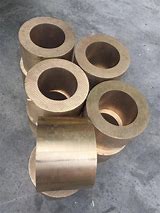**Hot Tips: Can a Soldering Iron Tackle Copper Pipes?**
(Can You Use A Soldering Iron On Copper Pipe)
Let’s get straight to the point. You’ve got a copper pipe. Maybe it’s part of a DIY plumbing project. Maybe you’re fixing a leaky joint under the sink. You’re staring at your soldering iron, wondering if it’s up for the job. The short answer? Yes. But there’s a catch. Soldering copper pipes isn’t like tinkering with electronics. It needs heat, patience, and a bit of know-how.
First, understand the basics. Soldering copper pipes involves melting a filler metal (solder) into the gap between two pipe fittings. The goal is to create a watertight seal. A soldering iron *can* work, but only for small jobs. Think tiny repairs or craft projects. For bigger tasks—like plumbing lines in your home—you’ll want a propane torch. It’s hotter, faster, and better for thick copper. Still, if a soldering iron is all you’ve got, let’s make it work.
Start by prepping the pipe. Clean the area where you’ll solder. Use sandpaper or a wire brush to scrub off dirt, corrosion, or old solder. Shiny copper is your friend here. Dirty surfaces won’t bond well. Next, apply flux. This chemical paste keeps the copper from oxidizing when heated. It also helps the solder flow smoothly. Spread a thin layer on the pipe and fitting.
Now, fire up the soldering iron. Let it heat fully. Touch the tip to the joint. Move it around to warm both the pipe and fitting evenly. This step is crucial. If one part is hotter than the other, the solder won’t spread right. Hold the solder wire against the joint. If the temperature is right, the solder will melt and get sucked into the gap. This is called capillary action. It’s satisfying to watch—like magic, but with molten metal.
Wait. Soldering irons aren’t as powerful as torches. They take longer to heat the copper. Don’t rush. If the solder balls up or looks gritty, the pipe isn’t hot enough. Let the iron sit longer. If the flux smokes or burns, you’re too hot. Wipe the tip clean and try again.
Safety matters. Wear gloves. Protect your eyes. Keep a fire extinguisher nearby. Soldering involves open heat, even with an iron. Don’t let curiosity turn your workspace into a hazard.
Tools you’ll need: a soldering iron (at least 60 watts), lead-free solder, flux, sandpaper, and a damp cloth (for wiping excess solder). Skip the lead-based solder for plumbing. It’s toxic. Stick to materials labeled for water systems.
Common mistakes? Overheating the pipe. It weakens the metal. Applying too much solder. It creates clogs. Skipping the flux. The solder won’t stick. Rushing the cooling process. Let the joint sit untouched until it’s cool.
What if the joint leaks? Reheat it. Add a bit more solder. If it still leaks, disassemble the fitting and start fresh. Patience beats frustration every time.
Why copper? It’s durable, resists corrosion, and handles heat well. But it’s pricey. For small fixes, soldering is cost-effective. For large-scale plumbing, consider hiring a pro.
(Can You Use A Soldering Iron On Copper Pipe)
Final thought: Practice first. Grab some scrap copper and test your technique. Master the art of heat control and solder flow. Soon, you’ll turn “Can I do this?” into “Done!”
Inquiry us
if you want to want to know more, please feel free to contact us. (nanotrun@yahoo.com)



